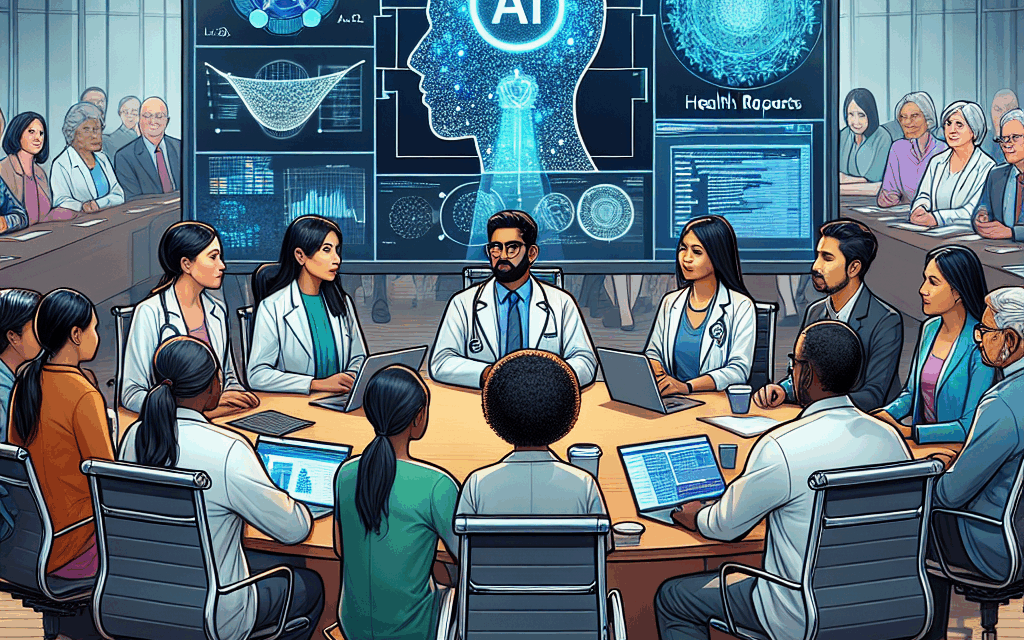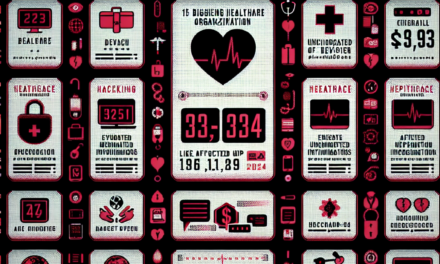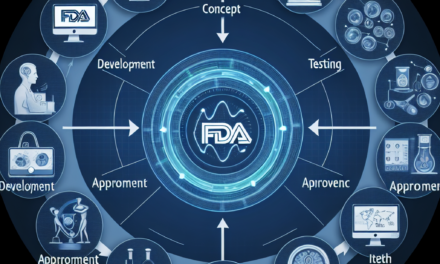Harnessing AI: Strategies for Public Health Experts to Enhance Patient Outcomes at the State Level
Artificial Intelligence (AI) is revolutionizing various sectors, and public health is no exception. As states grapple with complex health challenges, AI offers innovative solutions to enhance patient outcomes. This article explores strategies that public health experts can employ to harness AI effectively, focusing on five key areas: data analytics, predictive modeling, personalized medicine, telehealth integration, and community engagement. Each section will delve into the significance of these strategies, supported by case studies, statistics, and practical examples.
1. Data Analytics: Transforming Raw Data into Actionable Insights
Data analytics is the backbone of AI applications in public health. With the increasing volume of health data generated daily, public health experts must leverage AI to analyze this data effectively. By employing advanced analytics, states can identify trends, monitor disease outbreaks, and allocate resources more efficiently.
AI-driven data analytics can process vast amounts of data from various sources, including electronic health records (EHRs), social media, and wearable devices. This capability allows for real-time monitoring of health trends and outcomes. For instance, during the COVID-19 pandemic, states utilized AI to analyze data from multiple sources to track infection rates and predict surges in cases.
- Case Study: COVID-19 Data Analytics – In New York, public health officials used AI algorithms to analyze mobility data and predict COVID-19 hotspots. This analysis enabled targeted interventions, such as increased testing and vaccination efforts in high-risk areas.
- Resource Allocation – By analyzing historical health data, states can identify areas with high disease prevalence and allocate resources accordingly. For example, AI can help determine where to deploy mobile clinics or vaccination teams based on demographic and health data.
- Predictive Analytics – AI can forecast future health trends by analyzing past data. This predictive capability is crucial for preparing for seasonal outbreaks, such as flu or RSV, allowing states to implement preventive measures in advance.
Moreover, AI can enhance the quality of data collected through improved data entry processes and error detection. By ensuring that data is accurate and comprehensive, public health experts can make informed decisions that lead to better patient outcomes.
2. Predictive Modeling: Anticipating Health Trends and Needs
Predictive modeling is a powerful AI application that allows public health experts to anticipate health trends and needs. By analyzing historical data, AI algorithms can identify patterns and predict future health events, enabling proactive measures to improve patient outcomes.
For instance, predictive modeling can be used to forecast the spread of infectious diseases. By analyzing factors such as population density, vaccination rates, and mobility patterns, AI can predict where outbreaks are likely to occur. This information is invaluable for public health officials in planning interventions and allocating resources effectively.
- Case Study: Influenza Prediction – Researchers at the University of California, Los Angeles (UCLA) developed a predictive model that uses AI to forecast influenza outbreaks. By analyzing data from various sources, including EHRs and social media, the model accurately predicted flu activity weeks in advance, allowing for timely public health responses.
- Chronic Disease Management – Predictive modeling can also be applied to chronic diseases. For example, AI can analyze patient data to identify individuals at high risk for conditions like diabetes or heart disease. This allows for targeted interventions, such as lifestyle coaching or medication management, improving patient outcomes.
- Emergency Preparedness – States can use predictive modeling to prepare for public health emergencies, such as natural disasters or pandemics. By anticipating the health needs of affected populations, public health officials can ensure that adequate resources and services are in place.
Incorporating predictive modeling into public health strategies not only enhances preparedness but also fosters a culture of proactive health management. By anticipating health trends, states can implement interventions that lead to better health outcomes for their populations.
3. Personalized Medicine: Tailoring Treatments to Individual Needs
Personalized medicine, often referred to as precision medicine, is an emerging field that utilizes AI to tailor treatments to individual patients based on their unique genetic, environmental, and lifestyle factors. This approach has the potential to significantly enhance patient outcomes by ensuring that individuals receive the most effective treatments for their specific conditions.
AI plays a crucial role in analyzing genetic data and identifying biomarkers that can predict how patients will respond to certain treatments. By integrating this information into clinical decision-making, public health experts can develop personalized treatment plans that improve efficacy and reduce adverse effects.
- Case Study: Oncology – In cancer treatment, AI algorithms analyze genomic data to identify mutations that drive tumor growth. This information allows oncologists to prescribe targeted therapies that are more likely to be effective for individual patients, leading to improved survival rates.
- Chronic Disease Management – Personalized medicine can also be applied to chronic diseases. For example, AI can analyze data from wearable devices to monitor patients’ health metrics in real-time, enabling healthcare providers to adjust treatment plans based on individual responses.
- Pharmacogenomics – AI can help identify how genetic variations affect drug metabolism. By understanding these variations, public health experts can recommend medications that are more likely to be effective for specific patient populations, reducing trial-and-error prescribing.
Implementing personalized medicine strategies requires collaboration between public health experts, geneticists, and healthcare providers. By fostering interdisciplinary partnerships, states can develop comprehensive approaches that enhance patient outcomes through tailored treatments.
4. Telehealth Integration: Expanding Access to Care
Telehealth has emerged as a vital tool in expanding access to healthcare services, particularly in underserved areas. The integration of AI into telehealth platforms can enhance patient outcomes by improving the quality of care delivered remotely.
AI can facilitate telehealth consultations by providing healthcare providers with real-time data and decision support tools. For instance, AI algorithms can analyze patient symptoms and medical history during virtual visits, assisting providers in making accurate diagnoses and treatment recommendations.
- Case Study: Remote Monitoring – During the COVID-19 pandemic, many states implemented telehealth services to monitor patients with chronic conditions remotely. AI-powered platforms enabled healthcare providers to track patients’ health metrics and intervene when necessary, leading to improved management of conditions like diabetes and hypertension.
- Access to Specialists – Telehealth can bridge the gap between patients and specialists, particularly in rural areas. AI can help match patients with the right specialists based on their specific needs, ensuring timely and appropriate care.
- Patient Engagement – AI-driven telehealth platforms can enhance patient engagement by providing personalized health information and reminders. For example, AI can send automated messages to remind patients to take medications or attend follow-up appointments, improving adherence to treatment plans.
As telehealth continues to evolve, integrating AI will be crucial for maximizing its potential to enhance patient outcomes. By leveraging technology to improve access to care, public health experts can ensure that all individuals receive the healthcare services they need, regardless of their location.
5. Community Engagement: Empowering Populations through AI
Community engagement is essential for improving public health outcomes, and AI can play a significant role in fostering this engagement. By utilizing AI-driven tools, public health experts can better understand community needs and tailor interventions accordingly.
AI can analyze community data to identify health disparities and target interventions to address these gaps. For example, machine learning algorithms can analyze social determinants of health, such as income, education, and access to healthcare, to identify populations at higher risk for certain health conditions.
- Case Study: Health Equity Initiatives – In Los Angeles, public health officials used AI to analyze data on health disparities among different neighborhoods. This analysis informed targeted outreach efforts, such as mobile health clinics and educational campaigns, to address specific community needs.
- Community Feedback – AI can facilitate community engagement by analyzing feedback from residents on health programs and services. By understanding community perceptions and preferences, public health experts can design interventions that resonate with the population.
- Behavioral Insights – AI can analyze behavioral data to identify factors that influence health decisions within communities. This information can guide public health campaigns aimed at promoting healthy behaviors and improving overall community health.
Empowering communities through AI-driven engagement strategies fosters a sense of ownership over health outcomes. By involving residents in the decision-making process, public health experts can create more effective and sustainable health interventions.
Conclusion: The Future of AI in Public Health
As public health experts seek to enhance patient outcomes at the state level, harnessing AI presents a transformative opportunity. By focusing on data analytics, predictive modeling, personalized medicine, telehealth integration, and community engagement, states can leverage AI to address complex health challenges effectively.
The integration of AI into public health strategies not only improves the quality of care but also fosters a proactive approach to health management. By anticipating health trends, tailoring treatments, and expanding access to care, public health experts can significantly enhance patient outcomes and promote health equity across populations.
As we move forward, collaboration among public health officials, healthcare providers, technology developers, and communities will be essential for maximizing the potential of AI in public health. By working together, we can create a healthier future for all individuals, regardless of their circumstances.





